INDIAN OCEAN TRAVEL by TOURISMER
INDIAN OCEAN TRAVEL by TOURISMER

Responsible travel Thailand
Thailand is renowned for its tropical beaches, opulent royal palaces, ancient ruins and ornate temples featuring Buddha statues. Thailand has many faces: bustling Bangkok, a veritable open-air museum, the ancient Kingdom of Siam or the paradisiacal islands of the south.
The tradition of hospitality and Thai cuisine, recognized as one of the world's tastiest, will enchant you.
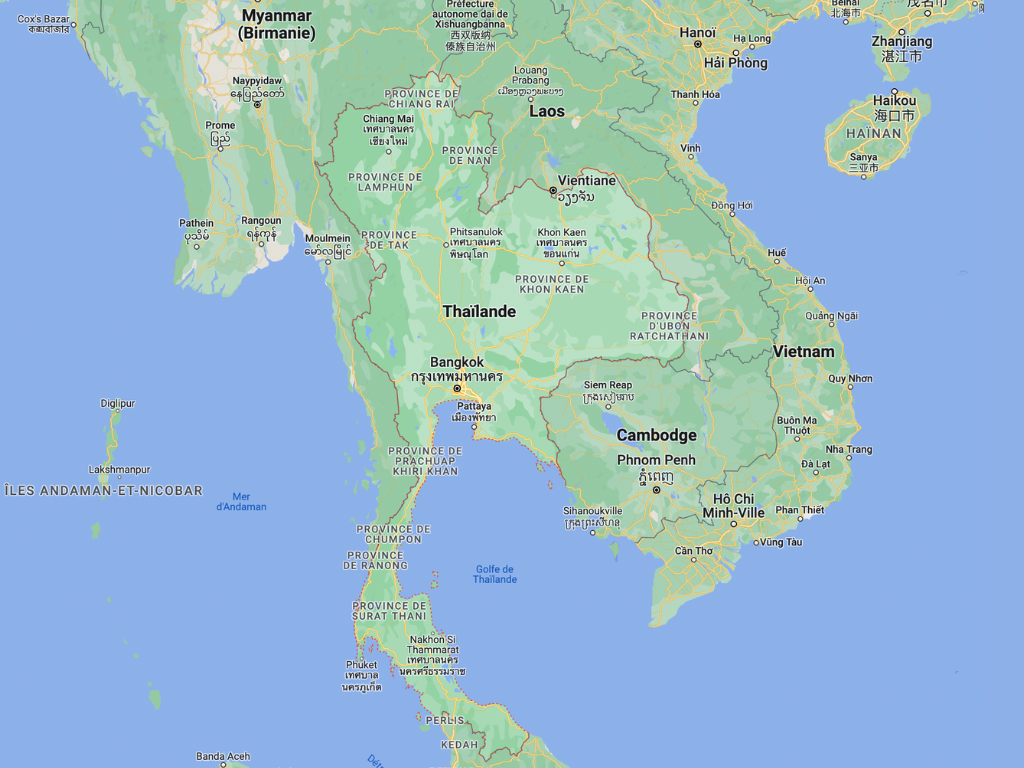
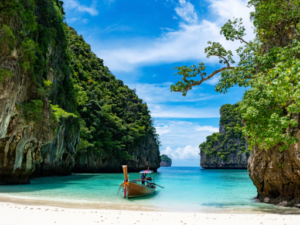
It's already been two decades since the land of smiles began the shift to responsible tourism. Protecting nature sustainably, while ensuring the development of community tourism, Thai gastronomy and the well-being of everyone is the challenge that Thailand has set itself and is on the way to winning.
Centers have also been set up to educate visitors about marine life and ecosystems, and new rules have been introduced to deal with over-tourism in certain areas.
We are supporting

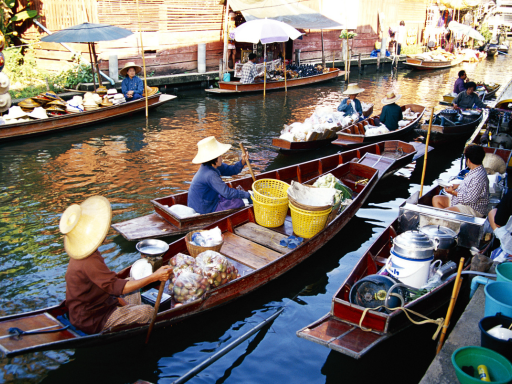
Bangkok (in Thai: กรุงเทพฯ, Krung Thep, "City of Angels", is the capital of Thailand, its population is greater than 9 million, more than 15 million people live in the metropolitan area of the capital.
The official date of its foundation by Rama Ist, the first king of the Chakri dynasty, is the , on the other side of the river. Bangkok joins the XIXe century at the heart of the modernization movement of the Kingdom of Siam, while the country was under pressure from European colonizing nations. The city is then XXe century the scene of Thailand's political evolution, notably with the abolition of the absolute monarchy, the adoption of a constitution, and several sometimes violent political upheavals. The city experienced tremendous growth from the 1960s and today exerts a central influence on the political, economic, cultural, academic and media life of Thailand.
A must see:

Founded in 1350 or 1351 by King U-Thong, it became the capital of the kingdom of Ayutthaya, or Siam in the 18th century.e century around 1700, it was one of the largest cities in the world, with nearly a million inhabitants. Destroyed in 1767 by the Burmese army, it lost its role in favor of the new capital, Bangkok, and is today mainly known for the ruins of its temples in a historical park, to see absolutely these 6 temples:
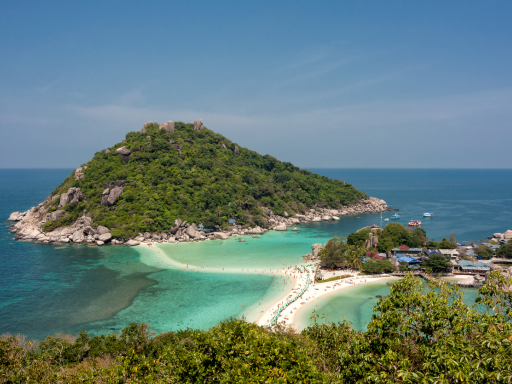
The island of Koh Tao is famous for diving, (with or without tank), hiking and rock climbing. The western part of the island, a white sand beach that stretches for 1.7 km, attracts many tourists.
In the South, Chalok Baan Khao is noted for its calm and scenic beauty.
Don't miss the magnificent granite boulders scattered around the island of Koh Tao, on the beaches and in the forest.
The cliffs attract many climbers who want to take advantage of these magnificent settings to try out this sport.
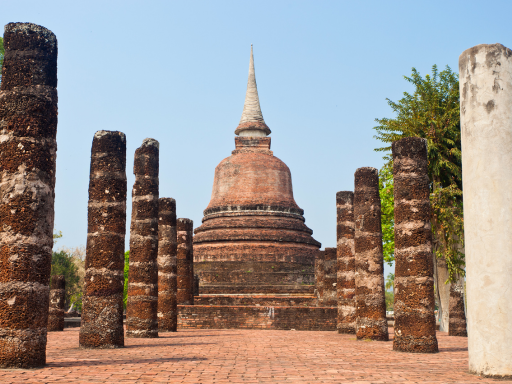
Sukhothai was the capital of the first Thai kingdom to rule over the Chao Phraya river basin, the Bay of Bengal to the west and the entire peninsula. Located some 450 kilometers north of Bangkok, the immense city of Sukhothai now lies in ruins. The wooden palaces of its kings have disappeared. However, the city still boasts numerous remains of temples, built in laterite and brick. Most of the buildings that have been uncovered, and in some cases rebuilt, lie within a rampart reinforced by a moat. But many other buildings, scattered in the surrounding rice paddies, are waiting to be freed from the earthen envelope that covers them.
Built on the banks of the Yom River, some 60 km north of Sukhothai, Sri Satchanalai was the kingdom's main satellite town. It was a pottery center. The city's suburbs produced the famous Sangkhalok ceramics.
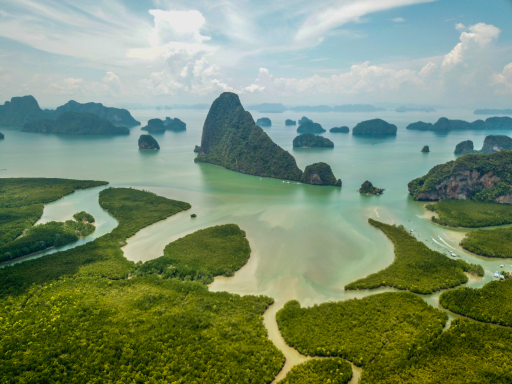
The Phang Nga Bay is a bay of the Andaman Sea of 400 km2 located in southern Thailand. Much of the bay is protected through Ao Phang Nga National Park. More than 200 km ago2 of mangroves. One of the largest and best preserved mangrove forests in Thailand. There are also 42 small islands and islets.
In the middle of a group of a dozen islands lies the unmissable tourist attraction : the two small steep islands covered with tropical forest named Khao Phing Kan and the nail-shaped rock Ko Tapu.
Other islands, often with impressive limestone cliffs, can be admired: Panyi (known for its fishing village on stilts and floating soccer pitches) and Hong, Raya Ring, Talu, Phanak, Boi Noi and Boi Yai.
This region is also home to many archaeological sites.
Jean Boulbet describes the bay as one of the most beautiful places on the planet and adds that “…the latter has really outdone itself in the arrangement of its decorations…”.
Cave paintings can be seen at Khao Phra At Tao, Khao Nak, Khao Raya and Khao Khien. In 2020, prehistoric paintings of at least 3000 years old were discovered on the island of Koh Talu.
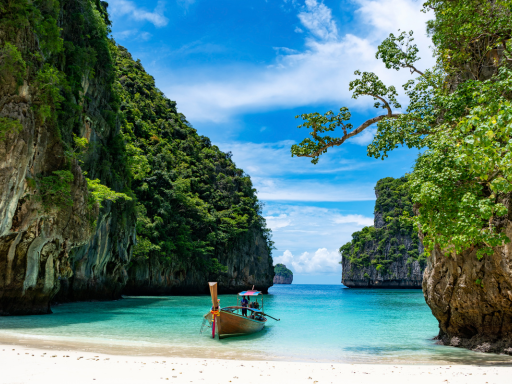
The Phi Phi Islands are a small archipelago of Thailand located in the Andaman Sea off the province of Krabi, to which it belongs. Very touristy, it has two main islands, Ko Phi Phi Don and Ko Phi Phi Le, the others being mainly rocks. The dive sites of the Phi Phi Islands are ranked among the most beautiful in the world.
Phnom Rung was the original name of the volcano, but also that of the temple since the XIe century, the name appears on four inscriptions in the Khmer alphabet discovered on the Prasat Phnom Rung. The name Phnom Rung derives from the Khmer word Vnam Rung which means wide mountain, as well as the words S-Thuadri and S-Thula Saila written using other Khmer alphabets in Sanskrit.
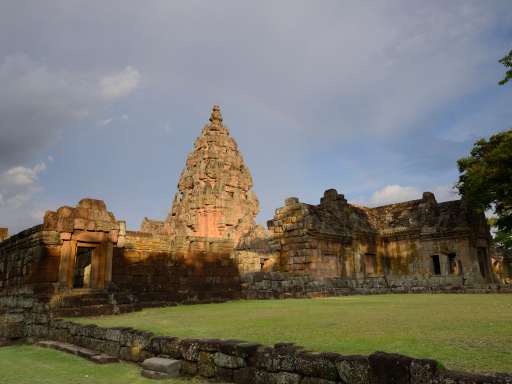
Prasat Phnom Rung is a sanctuary dedicated to the Pasupata sect of Saivite Hinduism. The structure atop Khao Phnom Rung has been compared to the residence of the god Shiva on Mount Kailash, and is "the largest and best restored Khmer temple in Thailand" (Lonely Planet).
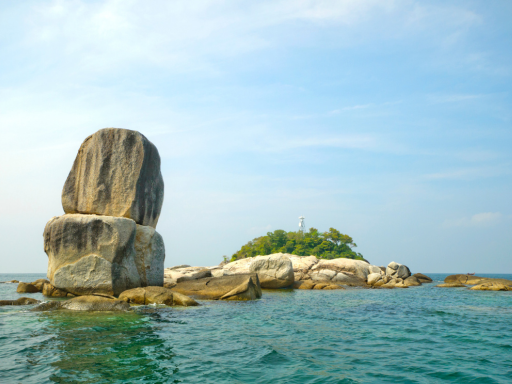
The archipelago is made up of a total of 51 islands located between 20 and 70km from the coast Thai. It is home to 32 species of fish and 105 species of birds.
The park contains around 25% of fish species in the world. You can observe: sharks, rays, groupers, eels, carp, catfish, salmon, perch, angelfish and butterfly fish, but also dugongs, dolphins, sperm whales and minke whales.
. You can observe: sharks, rays, groupers, eels, carp, catfish, salmon, perch, angelfish and butterfly fish, but also dugongs, dolphins, sperm whales and minke whales.
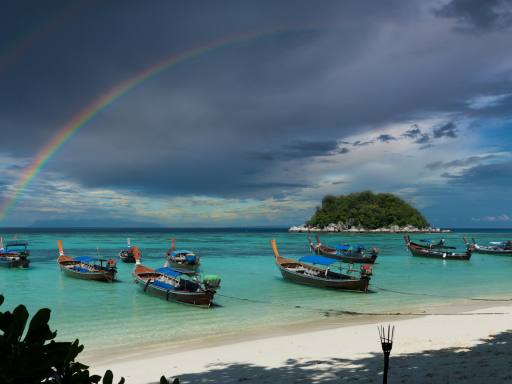
Situated in the heart of the Tarutao National Marine Park Nature Reserve, the island is part of the Adang archipelago, a group of around 10 completely uninhabited islands, Koh Lipe being the only inhabited one. Koh Lipe is considered one of the prettiest in the Andaman Sea, renowned for its white sandy beaches and turquoise waters. The island's original population consists mainly of the Chao people, commonly known as "sea gypsies". They live mainly from fishing and tourism.
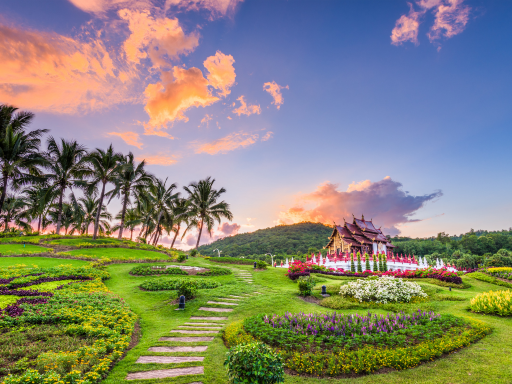
Chiang Mainicknamed the "Rose of the North", is Thailand's second-largest city, the cultural and economic center of northern Thailand and capital of Chiang Mai province.
Its historical significance stems from its strategic location near a southern branch of the ancient Silk Road, long before the modern influx of foreign visitors. The city has been a renowned center for its crafts, parasols, jewelry (especially silver) and woodcarvings.
A must see:
Wat Phrathat Doi Suthep is a Buddhist temple in Chiang Mai province. The temple is known as Doi Suthep (the name of the mountain on which it is located). The temple is a sacred site for the Thai people. The temple offers a beautiful view over the city of Chiang Mai. The temple can be reached at dawn to watch the sunrise over the city.
Wat Chiang Man is Chiang Mai's oldest temple. The temple houses two highly important and revered Buddha statues, Phra Sila (a marble Buddha statue) and Phra Satang Man (a crystal Buddha statue).
Wat Chedi Luang temple of the great stupa, founded in 1401, is dominated by a large Lanna-type chedi that took several years to build. It was damaged by an earthquake in the XVIe century, and only the lower two-thirds are still visible. Originally, the complex comprised three temples, Wat Chedi Luang, Wat Ho Tham and Wat Sukmin.
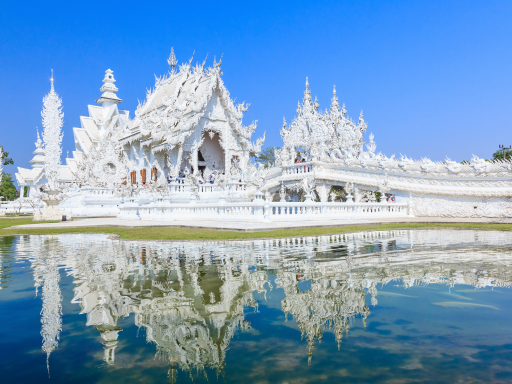
Chiang Raï , literally the major city, is a city in northern Thailand located on the Kok. The place is appreciated for the hospitality of its inhabitants and its authentic side. 13 kilometers to the south is Wat Rong Khun, better known as the "white temple". Wat Rong Khum is one of the most impressive temples in Thailand. Its construction dates from the end of the 20th century, on the ruins of an ancient temple.

Kanchanaburi is a city in western Thailand with a population of 52,000. It is located at the confluence of the Kwai Noi River with the Kwai Yai River, where the famous bridge over the River Kwai was built in 1942. by prisoners of war under the command of Japanese troops. One monument and two museums can be seen in Kanchanaburi: the Thailand-Burma Railway Museum and the JEATH War Museum, regarding the bridge itself. The Railroad of Death (Death Railway), used by rail transport in Thailand, and an Allied World War II cemetery are also located in Kanchanaburi.
The spoken language is Thai, spoken by 60 million people which is close to Chinese, and which was later enriched with Khmer, Sanskrit and Pali. Bangkok Thai is the official language, but there are local patois, 3 of which are particularly clear and have really different accents: Northern Thai, Northeastern Thai, and Southern Thai.
It has a specific alphabet of 44 consonants and 11 calligraphic vowels in roundness as well as sounds very different from Western sounds, complicated to differentiate and reproduce.
English is the second administrative and commercial language, and is spoken as a second language by 3.5 million people.
95% of Thai people are buddhists5% of Muslims.
Painting
Thai artists initially possessed only a set of five primary colors (red, blue, yellow, white and black), which they used to produce other kinds of pigments. These pigments were then used by artists to create murals, which were also used for banners and illustrations. Depictions varied in size according to the degree of importance, the use of shadows had not yet been introduced, and painting techniques were highly advanced for the time. From a religious and traditional perspective, Thai painting adorned the walls of temples and palaces, as well as book illustrations. Religion, as well as royalty, soon took pride of place within the paintings themselves, to highlight the beauty of objects and riches.
In the XIXe century, the pigments were enriched and new techniques, coming from the West, surged to give the paintings a more modern aspect. The use of gold leaf brought more light to the representations and the colors more details. Despite the perseverance of the traditional style, some artists managed the feat of creating their own style, born from the fusion between the traditional style and the Western style, a unique style combining tradition and modernity.

Sculpture
During the Sukhothai period (XIIIe–XVe century), the sculptures generally represented a seated Buddha. Their size could range from eleven meters wide for large statues, to the size of a thumb for small amulets. These sculptures were made as simple as possible in order to guarantee the enigmatic serenity emanating from the Buddha.
Ceramic
Excavations have unearthed pottery dating back over 5,000 years in northern Thailand.
The simplest pottery was mainly used for cooking and storing food. The more sophisticated ones, derived from Chinese techniques introduced 700 years ago, had a more decorative purpose.
Traditions differed from region to region. It was customary to place pots outside temples and houses to quench the thirst of passing strangers.
In the north-east, dark-brown pottery is produced in kilns in all shapes and forms, and is known for its beautiful yellowish-green decoration, featuring dragons and floral motifs.
In the end of XIIIe century, the blue-green celadon technique made its appearance. This technique is still used today according to the same processes used in the old days.

Weaving
According to tradition, weaving cannot be established without first making fabric, such as silk (made by silkworms). The silk can then be dyed and woven by the skilled hands of the weavers. Closely related to silk is another type of fabric, Medmee. This fabric has become as famous as silk and is a highly recognized specialty in Northern Thailand. The silk industry flourished until the XIXe century, then experienced a long decline due to too much Chinese and Japanese competition.
In the 1950s, an American, Jim Thompson, gained international fame by reviving silk industries. Today it is in the North of Thailand that the largest handmade weaving company in the world is located, created by the company of Jim Thompson.
Elle est alors devenue, peu à peu, le plus connu de tous les pays artisanaux au niveau mondial.
Music
Since ancient times, Thai musical instruments have been made by the people, according to their own ideas and means (inexpensive materials: bamboo, wood...). Later, other cultures, such as India, joined in, bringing a wider variety of instruments and songs.
During the Ayutthaya period (XIVe–XVIIIe century), the songs, which were usually accompanied by four to eight musicians, improved in vocal technique and in duration. Even today, the songs of this era are played and still relevant.
During the Bangkok period (XIXe century), after the songs, which were then accompanied by twelve musicians, were adapted in theaters, where impressive performances were played.
Over time, other cultures appeared in Thailand, such as those from Western countries or the United States, and brought to Thai culture a greater variety of instruments (bass drums, violin and organ) and songs. At the beginning of XXe century, musician Phra Chen Duriyang established Thailand's first orchestra and taught many young musicians. From the 1920s until today, several other orchestras were then created, Thai musicians improved their styles and refined their techniques.
Music took on great importance for royalty, when King Bhumibol Adulyadej, then a renowned jazz musician himself, became the first Asian honorary member of the Institute of Music and Arts of the City of Vienna (and the 23e in the world). Today, music still remains important in royalty. Princess Maha Chakri Sirindhorn is a talented classical music artist.

Theater
Within the Thai dramatic culture, several kinds of theater are distinguished. Since the Ayutthaya period there have been four different styles of theatre, the khon, the lakhon, the nang talung and the nang yai (and their puppets hun).
The khon was played only by men, even when the characters represented women. This classic theater genre mixes acting and dance. Music also plays a big role in the performances because it is at the origin of the actions performed by the actors, such as walking, running, laughing...
The non-mask-wearing actors have the right to speak at certain moments, unlike the masked actors. For the latter, a choir sings and recites verses to accompany their actions. The masks of these actors were richly decorated with gold, lacquer and jewels. Each one revealed a different personality through the significance of its facial expression. The costumes, equally rich and worthy of royal dress, were distinctive for their color, which conferred on the actors the title of main characters.
The performances were very long (around 20 hours), which pushed the duration of a single performance to two days. Later, under Rama II, the episodes of the epic were considerably shortened, down to three hours per performance.
The lakhon, is more expressive in its representations. The body is in constant movement, fluid, graceful, which gives the dance an unprecedented emotional character. Wearing a mask is reserved for fictional creatures.
The lakhon has three types: the lakhon chatri, the lakhon nok and the lakhon lai.
The nang yai is a popular shadow theater in central Thailand, where large figures (puppets) are projected onto a white screen and manipulated by actors hidden below the screen. The puppets called Hun were manipulated from below. Their movements are at the origin of dances in theaters khon and lakhon.
Close to the nang yaibut located in the south of Thailand, the nang talungThe puppets are smaller, with movable body parts (legs, arms, mouth...). The manipulators, actors and singers are hidden from the audience, and their singing and acting talents give the performances a gripping tempo.
The thai food, although similar in certain respects to that of its Chinese, Indian and Burmese neighbours, stands out for its original flavors and ingredients, such as curry, mint, lemongrass, coriander or even red basil. Spicy to excess for the Western palate and almost always accompanied by sauces or fish fumets (nam pla), she met with growing international success.
8 emblematic dishes of Thailand:
Pad Thai
Iconic dish of Thailand. These fried noodles even made it into the ranking of the world's favorite dishes. For the little anecdote, Pad Thai was born by decree at the request of Prime Minister Plaek Pibulsonggram, at the end of the 1930s!
Khao Phat

The most popular dish in Thailand ! fried rice with vegetables. It is usually served with meat, fish or tofu.
Som Tam
It is one of the spiciest Thai dishes: a green papaya salad cut into strips that is garnished with fish sauce, tomatoes, lemon, peanuts and very powerful small peppers. the result is fireworks for the taste buds!
Tom Kha
This soup simmers with coconut milk garnished with galangal root, kaffir lime leaves, kaffir lime leaves, lemongrass and coriander. you can put chicken, seafood, pork or even tofu in it.
Panang curry

A red curry paste with peanut flavors composed of dry peppers, galangal, lemongrass, kaffir lime, coriander, cumin, lemon, garlic and shallots; usually cooked in coconut milk to which meat, fish or tofu is added.
Pat Krapao
A stir-fry flavored with Thai basil, enhanced with chilli and a hint of oyster sauce, accompanied by rice and sometimes a fried egg.
Massaman
One of the mildest curries you will find, it consists of potatoes, onions, peanuts, meat or fish simmered in coconut milk and massaman curry paste.
Khao Niao ma mouang
… and dessert: mango sticky rice.
According to the official website of the department managing national parks, the country currently records 148 national parks distributed in all the provinces and grouping both land and sea parks.
Here is a selection of 10 parks:
Here is a selection of 7 superb hikes, from about 4 to 6 hours:
The rail network is quite dense, very economical and represents a unique opportunity to share with the locals.
It also allows you to admire different landscapes and represents a good compromise between speed and comfort. Its disadvantage is its hazardous punctuality. There are 4 lines that take you from one end of the country to another. The most used is the northern line, which connects Bangkok to Chiang Mai.
For long distance journeys, the bus is the preferred means of transport, it takes almost everywhere. The network is very dense and the turnover of buses is high. There are several types ranging from so-called VIP buses, to local buses with sometimes wooden floors!
It is the cheapest way to get around Thailand. Third class tickets are very very cheap. On the other hand, the trains are slow, their average speed is around 40 km/h and they are almost always late.
Very characteristic wooden boats in Thailand which owe their name of "long tail" boats to their motor and its large metal rod at the end of which is the propeller.
Find more updated information on Tourism in Thailand in our Blog Tourismer.io
